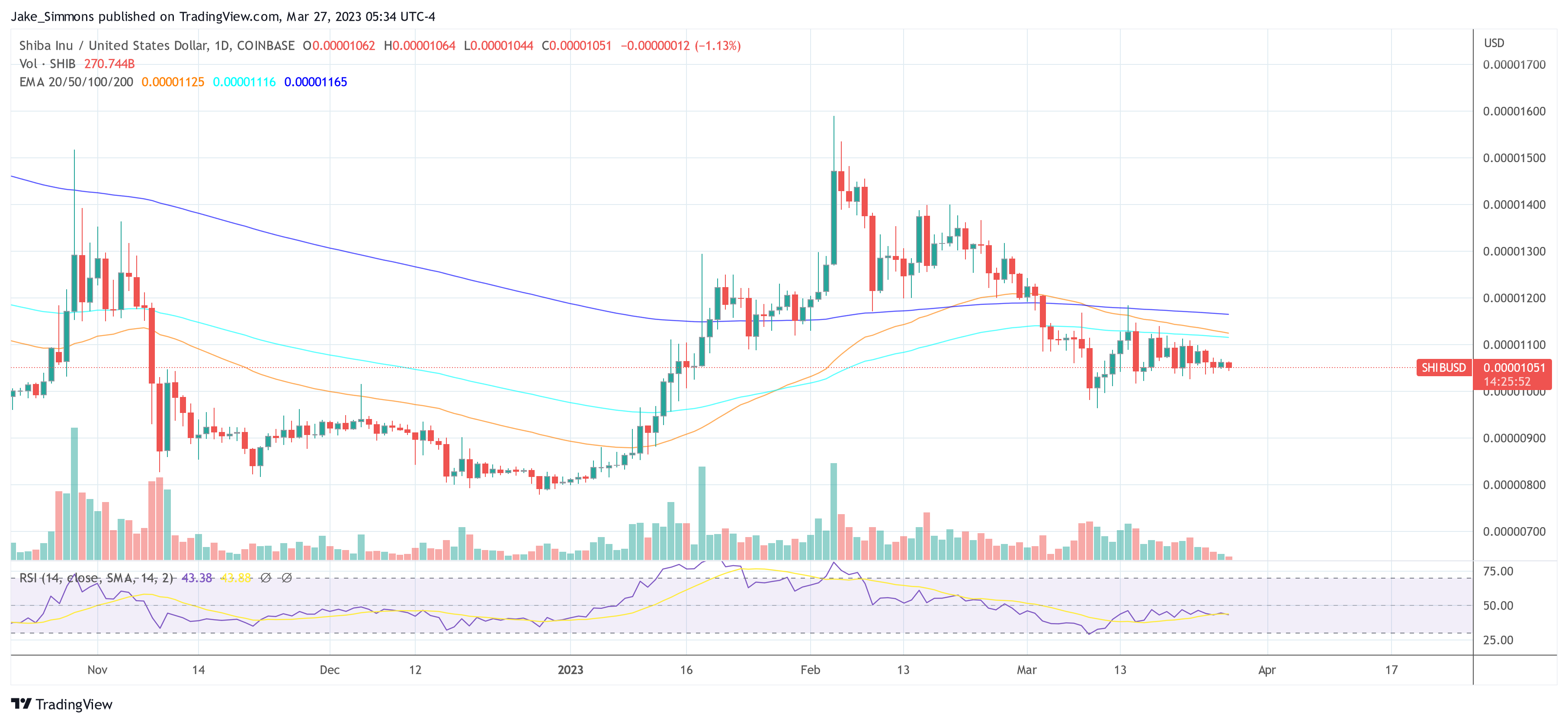The documentation for Shibarium, the layer-2 technology of Shiba Inu, was published by the developers two days ago, revealing more details about how it works. Among other things, the documents describe how the Shibarium Proof-of-Stake and the Ethereum Shibarium Bridge relate to each other.
While Shibarium’s Proof of Stake (PoS) chain uses side chains to process transactions, the bridge enables a bidirectional transaction environment between Shibarium and Ethereum. Moreover, the documents reveal that the PoS algorithm requires users to stake their BONE tokens.
Why yes, you are correct.
$BONE
is the gas for #SHIBARIUM.
pic.twitter.com/r0UuVyoITq
— Shib Dream * Shiba Inu News * Shib Army Social
(@theshibdream) March 26, 2023
Further, the platform’s blockchain technology allows users to create programmable tokens and smart contracts that are used in a variety of applications such as initial coin offerings (ICOs) of fungible tokens and non-fungible tokens (NFTs). Transaction fees are expected to be less than $0.01.
SHIB Influencer Lucie pointed out other key takeaways from the documentation in several tweets. One important cornerstone is the Shibarium Staking Manager.
As Lucie writes, proof-of-security consensus is ensured by having Shibarium perform all proof-of-concept and deployment verification operations on the Ethereum smart contract, leaving the computationally intensive tasks to layer-2.
Stakeholders can take on the role of validator, delegate, or observer to report fraud. This is where the Stake Manager comes in, which is the primary contract for validation-related activities such as managing stakes, distributing rewards and verifying signatures.
“Only one role, either validator or delegator, can be assigned to a single Ethereum address as a design choice. Using NFT ID as the source of ownership ensures that changes in ownership and signer will not impact the system,” Lucie further explained.
An important insight from the documentation also relates to the burn mechanism. When users make a transaction, a fee is incurred that is divided into two parts: the base fee (70%) and the priority fee (30%). The latter is paid to the validator, while the base fee is burned.
“Once a certain amount of BONE ($25,000) is accumulated in the burn contract, users can start the burn process from Shibarium. Once this process starts, accumulated BONE are sent to Ethereum’s L1, where an automated swap for SHIB takes place, and this amount gets burned calling its contract function,” Lucie further elaborates.
The All-In One Shiba Inu Wallet For Shibarium
Unification, the developer of Shibarium, has also announced an all-in-one wallet for the layer-2 technology and Shiba Inu. The wallet will enable two-way asset transfers between the first and second layer, staking/delegating, and will include a Shibaswap integration.
The project has also already been highlighted in Shibarium documentation and further publicized by Ringoshi Toitsu, a pseudonymous Unification Validator operator.
#Unification has built a revolutionary new 'Shibarium POS Chain' exclusively for $SHIB, as described in #Shibarium documentation.
This game-changing innovation offers a seamless wallet app, two-way asset transfers between L1 & L2, staking/delegating, & #Shibaswap integration. pic.twitter.com/yUhdHgucJW
— Ringoshi Tōitsu (@RingoshiToitsu) March 26, 2023
At press time, Shiba Inu was trading at $0.00001051, continuing its downtrend that persists since the beginning of February 2023.

from Bitcoinist.com https://ift.tt/wbnjVos

0 Comments